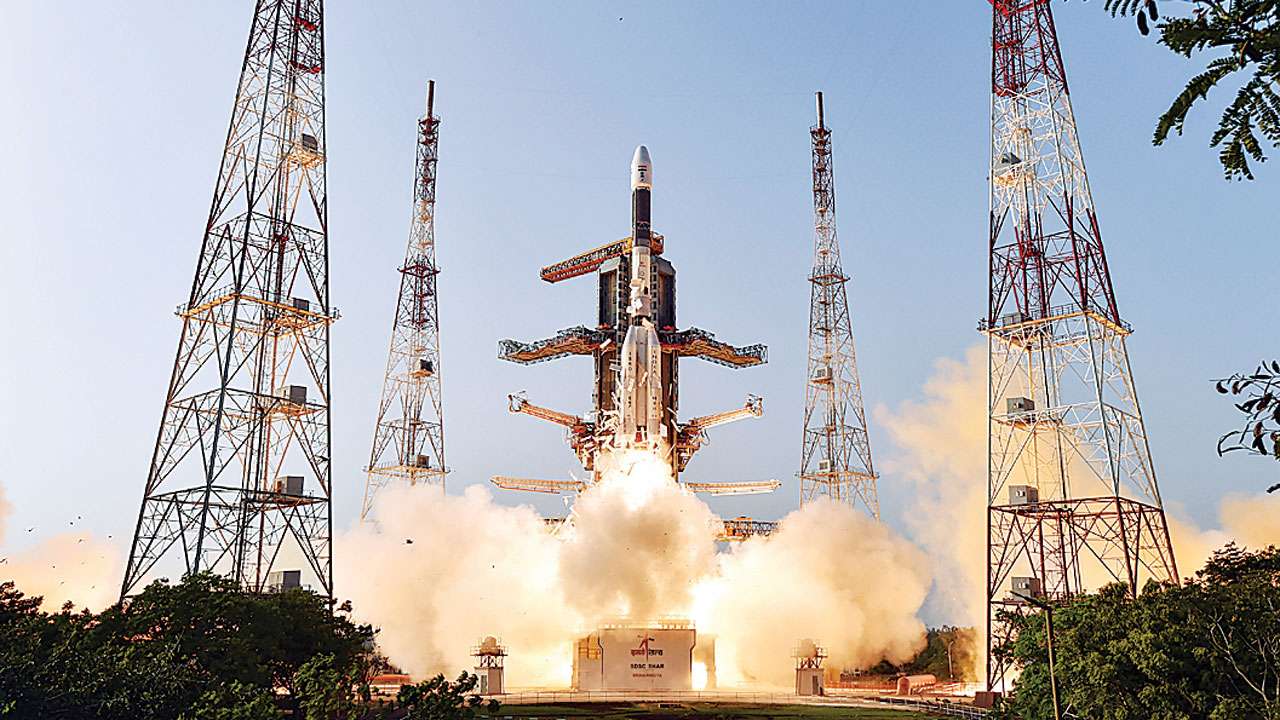
The Indian Space Research Organisation (ISRO) has begun the year 2019 with a bang. Not only has the space agency announced a slew of missions, including the much-awaited lunar lander, Chandrayaan-2, slated for 2019, but has set its sight high with its most ambitious project — the human space mission, Gaganyaan. While announcing the timeline for the human flight targeted at the end of 2021, ISRO chief K Sivan made two important comments. In the context of setting up a new vertical within the agency — the Human Space Flight Centre — he said the agency was looking beyond the first human flight. He said, “We are going to continue this programme in terms of a space station and human to the moon.” The second noteworthy comment from the space agency head was that India would be on a par with China with the human space flight.
Taken together, the comments amount to a marked strategic shift in India’s approach to space and point to the process of maturing of ISRO as a global player in the space arena. Clearly, the agency has recognised the need for human missions as a worthwhile goal to pursue over the long-term as a logical extension of its activities till now. It has also made it apparent that it is joining the undeclared space race with China.
When India took baby steps to become a space faring nation, Yuri Gagarin had already become the first human to have travelled to space in April 1961, and by the time ISRO took birth, the first human had landed on the moon. Since India’s forays into space began against the backdrop of a bitter space race between America and the Soviet Union, the founding father of the space programme, Vikram Sarabhai, had to declare that “we do not have the fantasy of competing with the economically advanced nations in the exploration of the moon or the planets or manned spaceflight”. Instead, he wanted India to use space technology to solve “real problems of man and society”.
After having followed Sarabhai’s vision for four decades during which ISRO contributed immensely to nation’s development, the agency has finally decided to turn the “fantasy” of a manned space flight into reality. This is definitely a shift because after the first Indian, Rakesh Sharma, was propelled into space aboard Soyuz T-11 in April 1984, participation in international manned missions or planning its own human flights were not on ISRO’s agenda. In fact, human flight was first discussed in India in 2004 — a year after China had sent its first human spaceflight. In 2006, ISRO formally discussed the idea with a group of external experts, and began working on some building block technologies needed for the mission as pre-project activity with seed money allocated in subsequent budgets.
India has been building its space capabilities in a step by step manner, working simultaneously on making rockets, fabricating satellites and developing applications. In parallel, it has a very strong presence in space science, having delivered successful missions to the moon, Mars and a space telescope AstroSat. The lunar orbiter, Chandrayaan, and the astronomy satellite have led to some spectacular scientific discoveries using home-made instruments. The Mars Orbiter Mission was a technology demonstrator. On the other hand, China, which began its space programme much later, went ahead more aggressively. It focused on military applications, human flight and building a space station, with an eye on projecting itself as a competitor to NASA. It has few space science achievements worth mentioning. Clearly, the Indian and Chinese programmes have grown so far with different goals and philosophies. In space applications and space science, India is ahead of China. But in human flights, China has taken a lead having demonstrated its prowess with as many as six successful missions, including operations like space walk and docking with its under-construction space station.
ISRO and its leadership are well justified in projecting their ambitions with regard to human flights vis-à-vis China, but these ambitions will need political backing beyond the first human flight planned for December 2021. Though a late entrant in human flights, ISRO may be up to some surprises up its sleeves, as it did with Chandrayaan-1 and the Mars mission. Sniffing signatures of water molecule on the moon by Chandrayaan-1 four decades after man landed there and stringing a spacecraft straight to the Red planet in first attempt are no mean achievements. For ISRO, the race may have has just begun.
The author is Managing Editor, India Science Wire. Views expressed are personal.